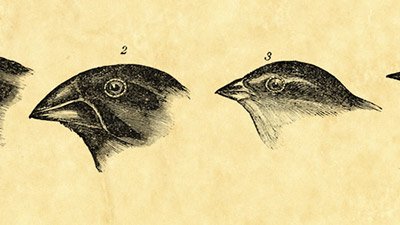
Lamprey Larval Cough Clue to Evolutionary Origin of Breathing
Lamprey larval cough said to be a clue to the evolutionary origin of breathing.
News Source
- ScienceDaily: “Scientists Identify Likely Origins of Vertebrate Air Breathing”
The normal neurological stimulus that regulates how fast you breathe is extremely sensitive to carbon dioxide. Your brain generates a rhythmic signal to trigger breathing, but its rate is regulated by the amount of carbon dioxide in the blood. Scientists searching for the evolutionary roots of this finely tuned regulatory mechanism have sought answers in the sea from which they believe air-breathing life emerged. Neuroscientist Michael Harris of the University of Alaska Fairbanks and colleagues believe that have discovered its evolutionary prototype in lamprey larvae.
“To breathe air with a lung you need more than a lung, you need neural circuitry that is sensitive to carbon dioxide,” says Harris. “It's the neural circuitry that allows air-breathing organisms to take in oxygen, which cells need to convert food into energy, and expel the waste carbon dioxide resulting from that process. I'm interested in where that carbon-dioxide-sensitive neural circuit, called a rhythm generator, came from.”
So, in the evolutionary view, which came first, the lung or the neural stimulation to breathe? Harris believes the carbon dioxide sensitive rhythmic breathing control evolved before lungs. However, he believes the neural control mechanism served a different purpose. Harris explains, “We try to find living examples of primitive non-air-breathing ancestors, like lamprey, and then look for evidence of a rhythm generator that did something other than air breathing.”
“I’ll huff and I’ll puff and I’ll blow out this mud!” This lamprey larva, videoed in Michael Harris’s lab, interrupts its rhythmic gill ventilation to “cough.” In the wild, lamprey larvae live in buried tubes and “cough” to blow out debris clogging their tubes. Be sure to watch the video at Youtube and note the “cough” at about the nine second mark. Image credit University of Alaska Fairbanks on www.sciencedaily.com.
The lamprey is a cartilaginous vertebrate believed by evolutionists to be primitive. “For biologists, lampreys represent an opportunity to envision the evolutionary past, because of their status as ‘living fossils’ that haven't changed in millions of years. Lampreys are thought to be an early offshoot on the evolutionary tree, before sharks and fish. Their lack of jaws distinguishes them from sharks or other types of fish.”’1
Lamprey larvae live in tubes buried in mud and pump water through their bodies to obtain food and oxygen. When the tube gets clogged with debris, a cough-like reflex blows the debris out. “We thought the lamprey ‘cough’ closely resembled air breathing in amphibians,” Harris explains. “When we removed the brains from lampreys and measured nerve activity that would normally be associated with breathing, we found patterns that resemble breathing and found that the rhythm generator was sensitive to carbon dioxide.”
Harris and his colleagues conclude, “The evolution of lung breathing may be a repurposing of carbon dioxide sensitive cough that already existed in lungless vertebrates, like the lamprey.”
The discovery of carbon dioxide sensitive neural circuitry in lampreys does not demonstrate common evolutionary ancestry. Clearing the lamprey’s larval tube or reminding mammals to take a breath are both actions designed to replenish oxygen. In a world full of animals designed to utilize oxygen and release carbon dioxide as a cellular waste product, such a trigger to stimulate oxygen-replenishing behavior is a sensible design. Unlike oxygen, which is often carried on molecules like hemoglobin, carbon dioxide readily dissolves in body fluids to form chemicals that can be detected and responded to instantaneously. The ubiquitous presence of this sophisticated neural circuitry is consistent with a world in which a common Designer, God, created all kinds of living things equipped to live in the world He made.
Further Reading
For More Information: Get Answers
Remember, if you see a news story that might merit some attention, let us know about it! (Note: if the story originates from the Associated Press, FOX News, MSNBC, the New York Times, or another major national media outlet, we will most likely have already heard about it.) And thanks to all of our readers who have submitted great news tips to us. If you didn’t catch all the latest News to Know, why not take a look to see what you’ve missed?
(Please note that links will take you directly to the source. Answers in Genesis is not responsible for content on the websites to which we refer. For more information, please see our Privacy Policy.)
Footnotes
- Despite its so-called primitive nature, the lamprey also has a sophisticated immune system. It has a thymus-like structure in its gills in which two kinds of immunocompetent cells mature, just as they do in mammals, birds, and other fish. Naturally, evolutionists reject the fact that a common Designer provided many animals with similarly functional immune systems and instead assert the lamprey is proof that such sophisticated immune systems appeared early in the evolution of vertebrates. (“Lampreys Give Clues to Evolution of Immune System,” ScienceDaily, February 3, 2011, http://www.sciencedaily.com/releases/2011/02/110202132340.htm.)
Recommended Resources

Answers in Genesis is an apologetics ministry, dedicated to helping Christians defend their faith and proclaim the good news of Jesus Christ.
- Customer Service 800.778.3390
- Available Monday–Friday | 9 AM–5 PM ET
- © 2025 Answers in Genesis




